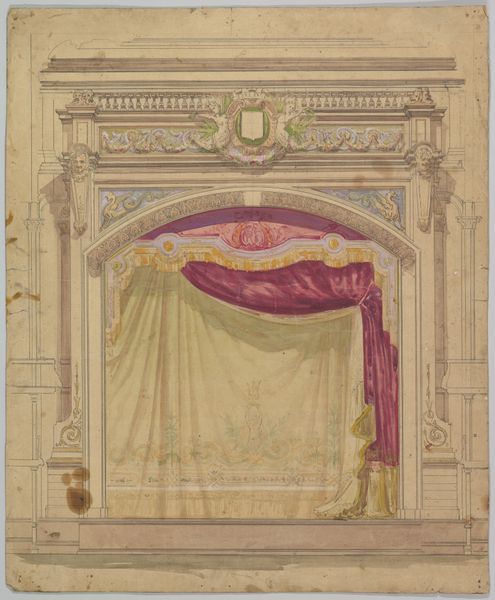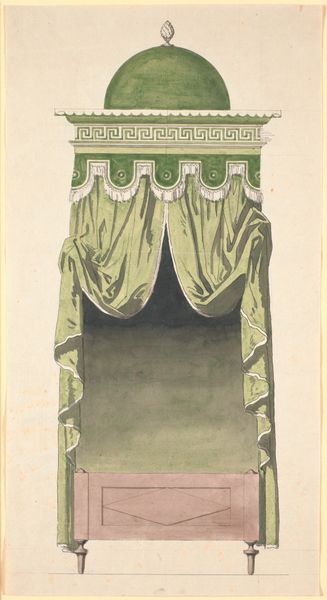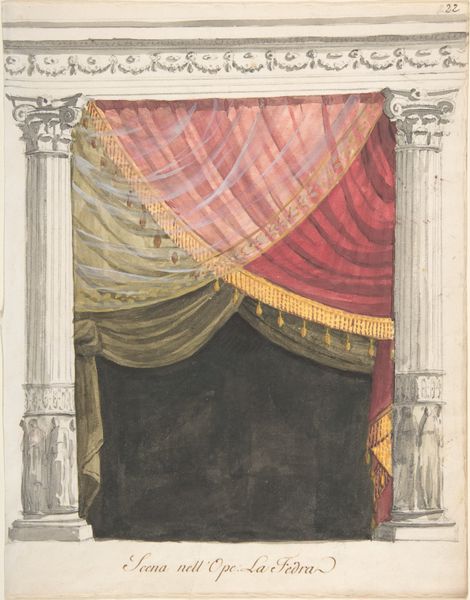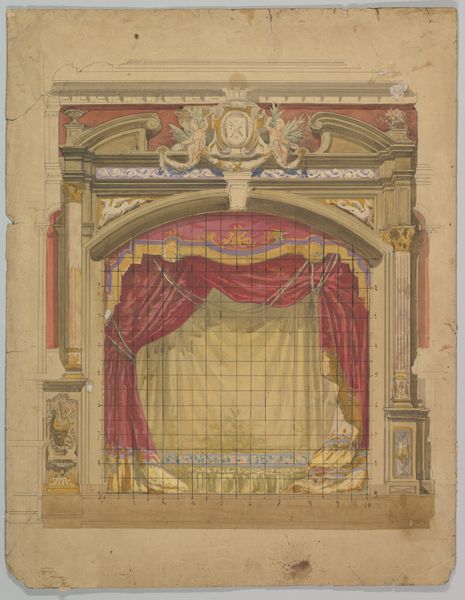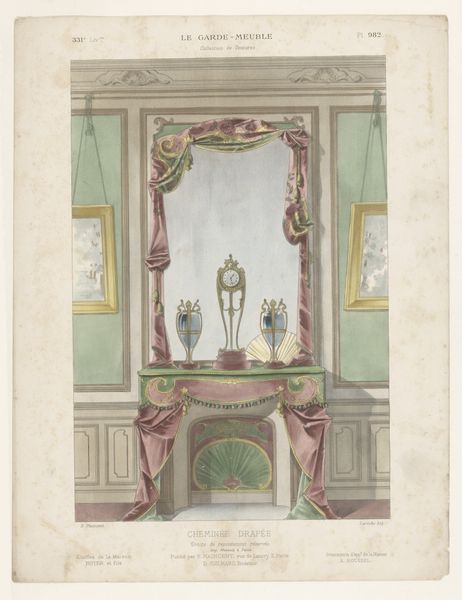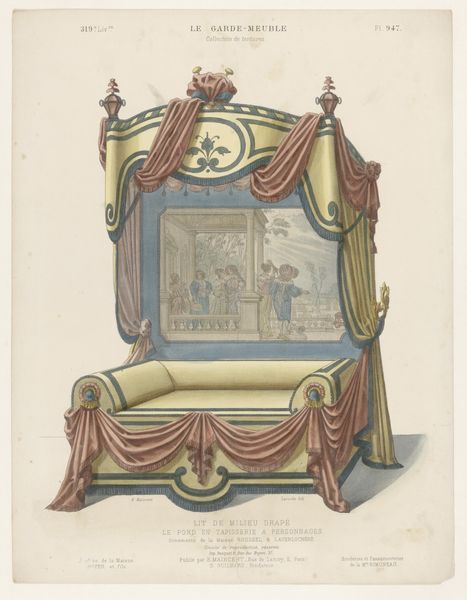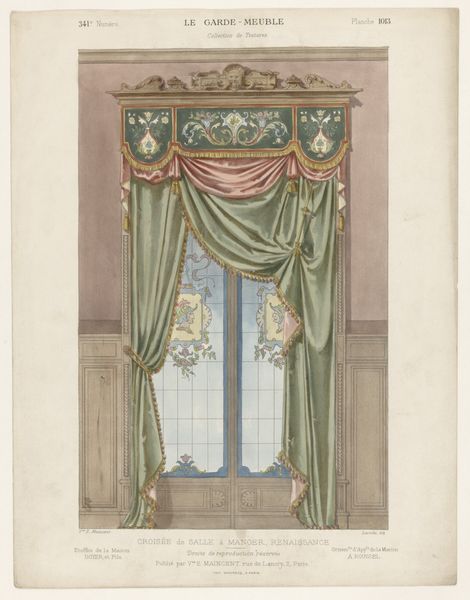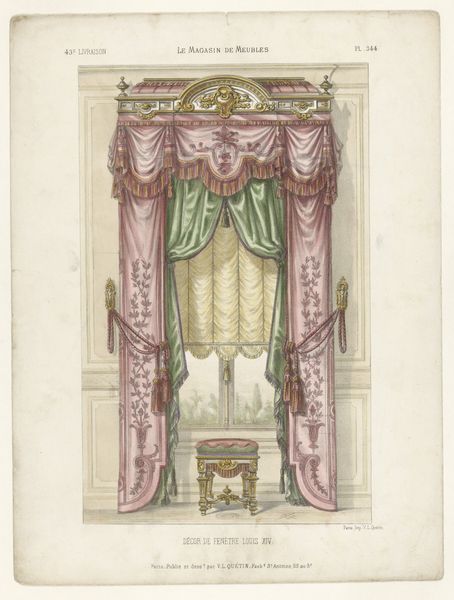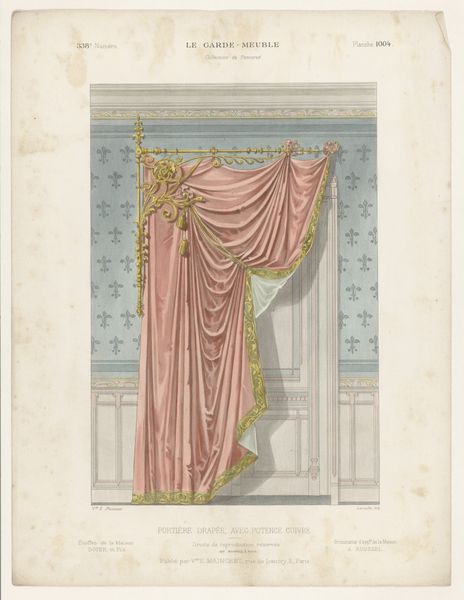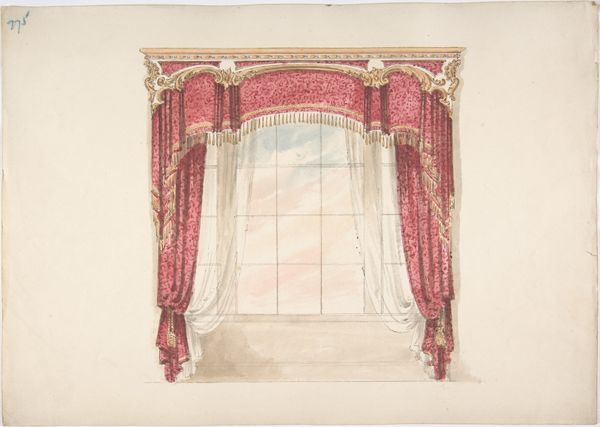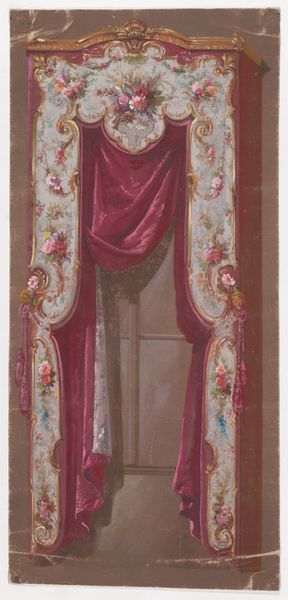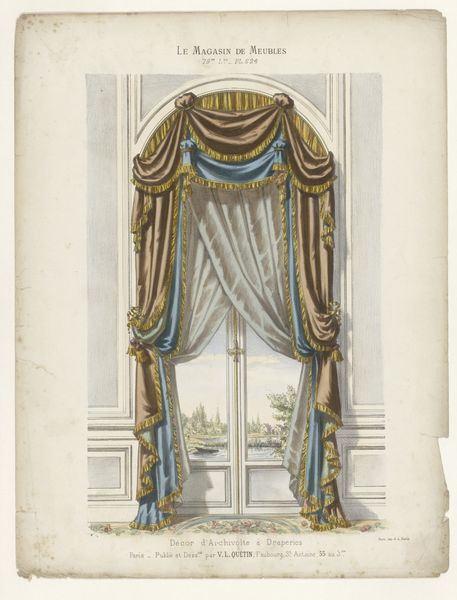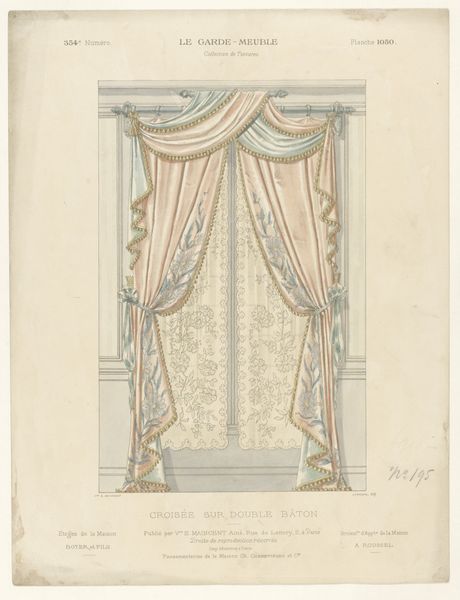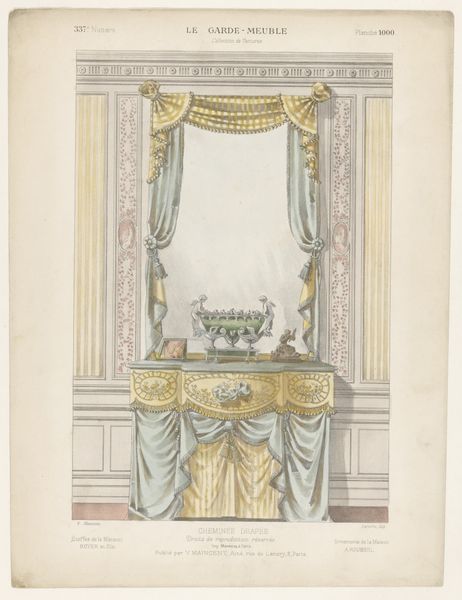
Copyright: Public Domain
Editor: So, this is Eugène Cicéri's "Design for a Stage Set," likely from between 1830 and 1890, created with watercolor, gouache, and graphite. It feels so opulent, all those layers of fabric and detail! What story do you think it's trying to tell, or is it even about that? Curator: More than a specific story, it speaks volumes about the societal context of theatrical performance and spectatorship in the 19th century. Notice the prominent display of the curtain. In effect, what is being unveiled here, and for whom? Think about class, access, and representation. Who was welcome in these spaces, and whose stories were told on those stages? Editor: That’s an interesting perspective. I guess I was focused on the pure aesthetic of the piece, the color and ornate detailing. The way that the watercolor gives this translucent, shimmering effect is fascinating. Curator: The materiality, absolutely, plays a part in that construction. But don't let that shimmer distract from its cultural work. Consider, for example, the role of theatre in solidifying social norms or, conversely, the subversive potential of challenging them. Were there performances in spaces like this that might have pushed those boundaries, reflecting the burgeoning movements for social change happening at the time? What kinds of commentary did theatre provide? Editor: Hmm, I hadn’t thought of it that way. So, it’s less about the individual artist's intent, and more about the social dialogue it participates in? Curator: Exactly. It becomes a document, unintentionally perhaps, of the values, anxieties, and aspirations circulating in society. Seeing this artwork as situated within intersectional narratives focusing on class and power helps us deconstruct and analyze these settings in detail. Editor: This makes me see beyond just the pretty colours. The set becomes a character itself. Curator: Precisely! And that character whispers volumes about the era that birthed it. Editor: I will always look at theatrical designs from now on through a more critical and analytical lens. Thank you.
Comments
No comments
Be the first to comment and join the conversation on the ultimate creative platform.
